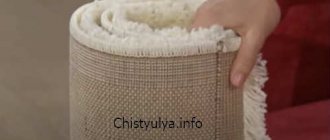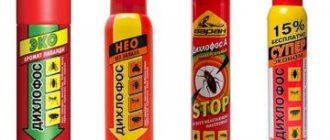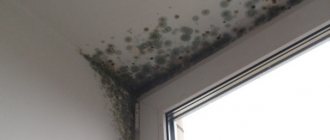How to remove odors in a car?
When you buy a new car, there are no foreign odors, but only the smell of new interior materials.
But after some time, the smell of newness gradually goes away and the car interior begins to smell completely different. During the operation of the car, the interior materials absorb a large number of different odors, ranging from the smell of tobacco smoke to the smell of dampness. Often, to get rid of the smell, we go to a car wash to eliminate the unpleasant smell by dry cleaning the interior, but, unfortunately, it is not always possible to remove the unpleasant smell the first time. The reason is that many odors are not easy to remove the first time, and also that many car washes use ineffective and cheap detergents to eliminate odors.
Also, a large number of car owners use various air fresheners in the car interior, which mainly cope with the elimination of unpleasant odors in the car interior. But, for example, people who suffer from allergies cannot use such shock-absorbing air fresheners in their car. There are also a large number of odors that such air fresheners cannot cope with.
Why does my car smell damp?
As a rule, the cause of the spread of an unpleasant odor is already developed “pockets” of mold or mildew. You can contact a car dealership for help or try to fix the problem yourself. In order to understand how to remove odor, let's highlight several reasons for its appearance. Moisture can enter the interior in several ways:
- From the clothes and shoes of passengers and/or the driver. Rainwater flows onto the floor of the vehicle, is absorbed into the seat upholstery, seat belts, and also when it gets into hard-to-reach plastic parts of the interior (glove compartments, dashboard, etc.).
- Through a rotten body, loose parts that form holes, cracks in the glass or upholstery.
- Most often, the smell comes from musty liquid in the car air conditioner.
Everyone knows that unpleasant odors in a car interior do not appear out of nowhere. However, not every motorist can guess that there are so many reasons for their appearance. In order not to be unfounded, we will present the most common sources of this unpleasant problem.
1. Smoke. Molecules of gaseous substances are able to penetrate most deeply into various porous and fibrous structures that make up the interior of each car. The problem of smoke odor is not limited to tobacco odor. If a car has problems with the exhaust gas cleaning or exhaust system, then one way or another, they will be sucked into the cabin atmosphere.
2. Mold and putrefactive bacteria. Ineffective ventilation, dampness and food debris are the factors that lead to fungal and bacterial contamination and the appearance of a moldy smell in the car interior.
3. Leaks of technical fluids or fuel. The smell of gasoline or diesel fuel is familiar to everyone - it indicates a clogged fuel tank ventilation system or fuel leaks on the way to the engine. But the source of the sweetish-sweet aroma can only be guessed by some drivers. This indicates that antifreeze is leaking somewhere.
4. Pollutants of physiological origin. Persistent and unpleasant odors are generated by waste products of people and animals - feces and vomit, urine, etc. In this case, the problem is further aggravated by the fact that both the atmosphere inside the car and the upholstery suffer - such persistent stains remain on it that they cannot be removed even by dry cleaning.
We suggest you read: How to attach a picture to a wall without drilling
5. Food. If you eat a lot and often in the car, and even prefer strong-smelling delicacies, then their smell is absorbed into the upholstery no worse than cigarette smoke. For this reason, you can overcome the musty smell in your car using the same methods as stinking tobacco amber.
Getting rid of most annoying “odors” is not easy. You will achieve a good result only when the source of the stench is found and eliminated and a whole range of measures are taken to restore a pleasant atmosphere in the salon.
Why do things smell like dampness, rubber, chemicals?
There are several reasons why your washed clothes may have an unpleasant odor. They must be installed, otherwise it will not be possible to cope with the problem. Factors that contribute to the appearance of a musty odor include:
- Stagnation of water in the drum or rubber cuff. To prevent this from happening, do not close the door tightly immediately after washing.
- Storing dirty clothes in the washing machine. In conditions of high humidity, bacteria and mold fungi begin to actively multiply. Regular washing will not help to cope with the smell they cause.
- Improper care of the washing machine. The source of unpleasant odors can be such elements as: drain hose, detergent tray, water filter.
- Incorrect connection of the hose to the sewer pipe. In this case, the laundry will emit a characteristic sewage smell after the first wash. Another reason for this “aroma” is the rotting of the old valve, subject to many years of use.
- Failure to comply with the dosage of detergents. A large amount of powder does not have time to rinse out, covering all the elements of the washing machine with a film. This mucus becomes a reservoir for storing and multiplying bacteria.
- Long-term storage of dirty items in a laundry basket. Microbes and fungi thrive in such conditions, quickly increasing their numbers and causing a rotten smell.
- Leaving things in water for a long time. If you leave laundry soaked in a basin for 2-3 days, it will begin to rot, emitting a sour smell. Also, things can turn sour in the machine if there is a sudden power outage.
The smell of rubber can come from things after washing them in a new machine. Therefore, all manufacturers recommend running the first cycle without laundry.
A chemical smell is a consequence of using large amounts of laundry detergent or other detergents. Wearing such things is dangerous to health, especially for small children and pregnant women.
When an unpleasant trail lingers from things after each wash and comes from all the laundry, the reason is hidden in the washing machine.
If this problem occurs once, most likely it is associated with long-term storage of dirty clothes in a basket or drum.
Sometimes a person discovers an unpleasant odor not immediately after processing things in the machine, but after drying. It can appear if moisture remains in the fibers of the fabric for a long time.
This happens when things are hung overlapping, at a small distance from each other, which prevents normal air circulation. Drying in a room with poor ventilation and low humidity levels makes the problem worse.
1) Wash your car regularly
Try to wash your car yourself often or at a quality car wash that uses expensive cleaning products that will not damage the paintwork of your car. Also regularly clean the interior of the car from dirt. To avoid the appearance of foreign odors, regularly check the cleanliness under the car seats, where various debris most often accumulates, which over time can lead to the appearance of an unpleasant odor that is difficult to remove.
Every time you visit a car wash, clean not only the car body, but also the mats and upholstery inside the cabin.
Check the pockets located at the rear of the front seats to ensure they are free of debris. Most often, if the owner of the car has children, leftover food, candy wrappers, etc. get there, which can lead to the appearance of a foreign odor in the cabin.
When visiting a car wash or doing it yourself, clean the child seat, which is most likely to retain foreign odors.
Remember that the appearance of a foreign smell in the cabin does not mean that its cause is located here. The source of interior odor can be anywhere in the car. Therefore, when cleaning your car from foreign odors, be sure to pay attention to the trunk, which, like the interior, needs regular cleaning.
Methods of disposal
Before you start the fight, you need to inspect the basement, eliminate the garbage there, study the communications running underneath the house, and remove unnecessary things. If these measures do not bring a positive result, then forced drainage must be performed.
| Fungal growth on the ceiling and walls of the cellar, smells like mold. | It is necessary to identify all cracks and crevices and dry them from moisture. | Thoroughly clean off all existing plaque and treat surfaces with an antiseptic. Ventilate and cover the foundation with a waterproofing compound. |
| The integrity of the water pipes is compromised; condensation forms on them, which must be dealt with. | Inspect all structures. | Replace old screw-on valves with modern two-stroke valves. To eliminate the temperature difference inside the room with the surface of the pipes, insulate them. This action will avoid the formation of condensation. |
| There is no ventilation. | It is impossible to completely get rid of mold and the smell of dampness without drying. | To maintain normal air humidity, constant ventilation is required. If a simple system does not allow creating the necessary conditions for this, then it is necessary to install equipment for forced ventilation, including automatic control devices. |
| Leaking sewer pipes. | Integrity must be constantly monitored. | If the joints are damaged or the tightness of the joints is compromised, repair work is carried out immediately. There is no need to try to restore damaged parts. Having replaced them, the entire area of the basement must be cleaned and the room deodorized. |
| Groundwater enters the cellar. | This can only be caused by improper drainage design of the entire site and the area around the building in particular. | If for some reason it is impossible to divert the drainage from the walls of the house, then a pit is made in the cellar where the liquid will be collected by installing a drainage pump there. |
| Biological waste. | Rodents and stray animals constantly live in basements unless their access there is removed. | Install grilles on ventilation windows. Carry out regular disinfection and etching of rodents, at least 2 times a year. Store winter supplies in boxes on specially equipped racks. After emptying the container, rinse it, disinfect it, and throw away unnecessary food residues. |
1. It is necessary to take into account that if it smells like mold, it means the humidity inside the room is about 50% or even higher.
2. The smell penetrates into the house only through cracks in the floor and walls. Most likely, it flows back and forth into them.
3. It is impossible to do without waterproofing work both outside and inside the building.
Effective ways to eliminate odors
We have already said above that you can temporarily overcome the unpleasant smell in the car interior with a stronger and more pleasant aroma. To make the air in the cabin clean and fresh again, we find, localize and eliminate the root cause of the problems. After this, we begin cleaning, ventilating and deodorizing the interior.
At the first stage, try to detect the source of the stench and perform a number of simple operations:
- remove foreign objects from the interior and trunk, remove and wash the floor mats, wash the covers;
- clean and maintain HVAC systems;
- vacuum the surfaces (it is better to use a washing unit);
- Clean upholstery and flooring. In case of severe contamination, use special chemicals;
- wash plastic, polymer and synthetic elements with warm water and soap or clean with automotive plastic cleaner;
- Leave the car completely open for several hours to thoroughly dry and ventilate the interior;
- replace the cabin filter.
Even these simple steps can remove the unpleasant odor in the cabin. If it remains, then we will resort to “heavy artillery” - treating surfaces with steam, antibacterial drugs and ozonizing the interior. Ozone is a powerful disinfectant. This neutralizer will get rid of the smell in the car and clean the farthest places of the cabin from bacteria, viruses and other microorganisms.
Today, ozonation services are provided by every company that cleans and washes cars. Buy an ozonizer for personal use - this useful device will come in handy in the garage and at home. It is only important to remember that the effect of the oxidizer on the body has not been fully studied, so after the procedure you should ventilate the salon. Ozone very quickly breaks down into ordinary oxygen, so with the right approach, using a neutralizer will only be beneficial.
Cleaning gutters against moisture in the car interior
Clogged door drains are the leading cause of moisture in your car. As a rule, they are clean within the first two years after the car leaves the assembly line.
Then time takes its toll and without proper care, these gutters become clogged. To clean them, you should take a piece of steel wire of a suitable diameter and simply clean the gutter. Usually the drainage hole is located at the bottom of the door under the seal.
We advise you to read our articles
[su_custom_gallery source=”taxonomy: post_tag/1598,1100" limit=”2" link=”post” target=”blank” width=”290" height=”290" title=”always”]
2) Wipe the car interior
To prevent foreign odors from appearing in your car, regularly wipe all plastic, wooden and metal surfaces inside the car using a clean cloth and special cleaning products that will not damage the finishing materials of the car’s interior.
To clean the leather surface, use only special leather cleaning products, which are sold at any auto store.
We suggest you read: What to do if a thermometer breaks, how to remove mercury if a thermometer breaks, why mercury from a thermometer is dangerous for humans
If you are going to clean the interior yourself on a hot day, then it is advisable to place the car in the shade so that the interior of the car does not become hot, since otherwise it will be difficult to clean in a stuffy interior.
When cleaning the interior, be sure to check the glove compartment for foreign objects that have accumulated. Remove anything from it that may cause unpleasant odors. After this, wipe the glove compartment with a damp cloth to remove dirt.
Often, many owners do not change the cabin filter on time, which causes an unpleasant foreign odor. To eliminate it, change the cabin filter regularly.
Regularly dust all interior surfaces to avoid accumulating dirt that will be difficult to clean.
Wipe the inside and outside of your car windows, as they are a frequent source of dirt and unpleasant odors.
What cleaning and disinfection products are best for removing unpleasant odors?
If you want to vacuum the interior of the car, then before doing this, be sure to wipe the corroding dirt of the car seat with a brush, treating it with a special product. Remember that dirt and odor strongly eat into the fabric and velor seats of the car.
Before turning on the vacuum cleaner, make sure that all surfaces are dry from water and from the special products you used for pre-cleaning.
If the source of unpleasant odors is the car mats, then it is advisable to take them outside for cleaning, so that during cleaning it will be more convenient for you to thoroughly vacuum and rinse everything.
Don't forget to vacuum the trunk of your car as well.
After you have vacuumed the car, if dirt has accumulated inside the folds and seams of the seats, you need to use a brush and a special shampoo (fabric conditioner for car interior) to remove dirt, which is also a common cause of unpleasant odors in the car.
When using water to clean the seats, be careful because if you over-wet them, it will take several days for them to dry completely. Water can also leave a musty odor in the seats.
Check the car interior for stains, which are a source of pollution and almost always carry a foreign odor.
To remove excess water from the surface of the materials being cleaned, use appropriate rags or sponges that absorb moisture.
If after thorough cleaning there is a residual unpleasant odor, it can be removed not only by ozonation. There are many adsorbents that you can find at hand. Let's talk about the most effective of them in more detail.
Baking soda
Our grandmothers knew that sodium bicarbonate (the chemical name for baking soda) absorbs odors well. An open pack of soda left in the refrigerator niche deodorized the space for several months.
We can also use the miraculous abilities of this substance for our purposes. It is enough to generously sprinkle soda on the area where liquid with a bad odor has been spilled so that it absorbs it. After this, vacuum the problem area.
Charcoal
Being an excellent adsorbent, charcoal is used both by industry and pharmacology - there is no such person who has not been treated with activated carbon tablets. The absorbent properties of burnt wood are also useful for removing unpleasant odors from the interior. Leave an open package of barbecue fuel in the cabin for a few days, and not a trace of the heavy spirit will remain.
By reacting with other substances, acetic acid can neutralize their odor. As for the strong, recognizable aroma of the seasoning itself, it is short-lived and, with good ventilation, disappears within a few hours.
Using vinegar you can quickly get rid of the smell of cigarettes. To do this, 50-100 ml of liquid is poured into a glass jar and left in a closed cabin overnight. The procedure is repeated for a week, after which you can enjoy a healthy atmosphere inside. It is only important to replace the vinegar with a fresh portion each time - after 15-20 hours, the adsorbing properties of this substance decrease.
We invite you to read: Sewer smell in the bathroom: what to do and how to eliminate it?
Ammonia
The most powerful of the non-specialized adsorbents, which is used to remove odors in the car interior, is ammonia. It is used in the same way as vinegar, however, the single dose of liquid should be reduced to 10-15 ml. In addition, this strong-smelling substance should be used carefully, otherwise prolonged ventilation of the interior will be required.
Even a strong tobacco spirit can be removed in 5-6 hours. After this, the interior must be ventilated - driving while smelling ammonia is strictly prohibited.
Everyone is familiar with the usual “stinkers” hanging on the mirror or sticking out of the ventilation grilles. Today we won’t talk about them, because natural flavors give a much more pleasant effect.
Place a couple of vanilla pods on the bottom of a canvas bag, sprinkle with ground coffee or chopped citrus zest, and the atmosphere in the salon will be filled with your favorite aroma. Any woman will appreciate it, because it is harmless for the smallest passengers.
In conclusion, I would like to say that accuracy, compliance with hygiene standards and timely cleaning of the interior will allow you to never think about how to get rid of the smell in your car. No one is immune from “force majeure” circumstances, but in this case you can use our advice and restore the balance of freshness and cleanliness in the interior of your favorite car.
Methods for cleaning the rubber cuff and drum
If you regularly use bleach containing chlorine during the washing process, the likelihood of fungal spores is practically reduced to zero. You can use bleach to clean the surface of the rubber seal and drum. Mold fungus dies under the influence of acid composition and high temperature.
Cleaning is done as follows:
- bleach, which contains chlorine, is poured into the powder compartment;
- a long-term program is started with the highest possible temperature;
- after heating the water, a two-hour pause is made, then the cycle resumes;
- at the end of the process, vinegar is poured into the powder compartment and the rinsing program is started;
- the loading hatch opens;
- the surface of the drum and cuff is wiped with a cloth, which is pre-moistened in vinegar;
- To remove the smell of vinegar, the rinsing process is started again.
Using Vinegar
If things smell damp after washing, it is necessary to remove the causes of the unwanted odor. You can clean plaque and accumulated mucus on the internal parts of the washing machine using the “idle” boiling mode and high temperature. If the desired result is not achieved, the procedure is carried out using a small amount of detergent.
To remove scale and limescale, pour vinegar into the detergent compartment:
- the high temperature washing mode is activated;
- after 5 minutes the machine stops and is left to soak for 1 hour;
- the unit starts again before the wash is completed;
- after draining the water, the surface of the filter and heating elements is cleaned of dirt manually;
- Water and vinegar are diluted in equal proportions;
- the resulting composition is used to treat the door, cuff and drum;
- The internal surfaces are wiped with a dry cloth.
The use of citric acid, soda and copper sulfate
If there is a damp smell in the washing machine, how to get rid of it using improvised means? You can solve the problem using citric acid:
- citric acid is poured into the detergent compartment;
- the longest mode with high temperature is set;
- the washing unit starts until the program in use is completely finished;
- if scale begins to peel off during the washing process, a characteristic noise is heard;
- the program stops;
- the fallen pieces are removed;
- after finishing washing, the remaining scale is removed from the machine;
- The inner surface is wiped with a wet cloth.
If your laundry smells damp after washing, you can clean the machine using soda ash:
- soda and water are mixed in equal proportions;
- the surface of the drum, door and cuff is treated with the prepared composition;
- leave the washing machine in this form for 30 minutes;
- the solution is removed with a regular sponge;
- the accelerated wash mode is set at idle;
- After the end of the program, the internal parts are wiped dry.
You can carry out a similar procedure using copper sulfate:
- copper sulfate is mixed with water in equal proportions;
- the resulting composition is applied to the surface of the cuff and drum;
- the washing unit settles for 24 hours;
- detergent is poured into the tray;
- the accelerated washing mode is activated;
- After the process is completed, the machine is run without using detergent powder.
6) Deodorize the car
After you have cleaned your car of all contaminants, you need to deodorize your car in order to ultimately eliminate the appearance of all unpleasant odors. To do this, use a special liquid freshener (spray).
To deodorize the entire interior, open the hood of your car.
Start the engine and set the air conditioning (or climate control) to blow air into the cabin at maximum mode - the cooling mode should be turned off. Please note that the internal air recirculation mode in the cabin must be turned off. That is, the interior airflow system must take air from the street.
Under the hood, locate the A/C heating element or climate control unit. Typically it is located under the hood on the front passenger side. Traditionally it is installed under the hood vents or under the windshield.
To deodorize the interior of a car with the interior air blowing on, you must inject car deodorant into the vents. Inject the freshener several times and return to the car to make sure that the freshener has begun to flow through the cabin ventilation system. Repeat this process if necessary.
Car deodorant, entering through the vents, passes through the entire air conditioning system, eliminating foreign odors in all ventilation units, where, as a rule, it is difficult to clean manually due to inaccessibility.
Now, in order to completely clear the ventilation of foreign odors, you need to turn on the air conditioner to maximum cooling and repeat the process of injecting deodorant into the air supply ventilation.
Prevention of relapse
Mold is a rather annoying and stubborn fungus. Once you delete it, you cannot be sure that it will not appear again. As soon as conditions are favorable, mold will settle in the washer again
To prevent this, it is important to constantly maintain an uncomfortable environment for her:
after each wash, be sure to wipe dry all accessible cavities: tray, drum, seal, elastic band, hatch; contrary to the annoying advertising video, it is important to leave the washing machine window slightly open between washes, but the tray must be removed, rinsed and left to dry; in the room where the machine is located, there must be a ventilation system, otherwise a problem may arise due to dampness not in the machine itself, but around it; after the end of the washing cycle, the laundry must be removed immediately, without allowing it to keep the drum wet; Do not store dirty things in the drum - there are special baskets or bins for this. Otherwise, a musty smell will appear in the machine (even if the laundry is dry, there are always microorganisms on it, and particles of dried food, dead skin cells, ingrained sweat or other secretions are an excellent environment for their reproduction); when using conditioner, it is better to pour in less of it than more, and be sure to run an additional rinse to wash away any remaining product; the rinse aid and powder must be of high quality; you cannot skimp on them for the benefit of fungal development; once a month it is necessary to treat the cavities of the machine with the hottest possible water using a “idle” wash at the maximum time and temperature - such prevention will allow you to regularly get rid of microorganisms and fungi, preventing them from multiplying; every six months it is advisable to “run” the washing machine without washing clothes with citric acid; the hose and filter also require cleaning at least once every six months. It is always easier to prevent any problem than to then look for ways to solve it
Odor and mold in an automatic car is no exception. If you do not take preventive measures, in a favorable environment the fungus and the accompanying “aroma” will certainly appear, even if they were not there before. Well, if you have, you need to take extra care of the car.
It is always easier to prevent any problem than to then look for ways to resolve it. Odor and mold in an automatic car is no exception. If you do not take preventive measures, in a favorable environment the fungus and the accompanying “aroma” will certainly appear, even if they were not there before. Well, if you have, you need to take extra care of your car.
9) Protect yourself from unpleasant odors in the future
To prevent an unpleasant odor from appearing in your car in the future, purchase rubber floor mats that will protect your velor mats not only from contamination, but also from the absorption of various foreign odors.
Even if you sit down and spill something on the rubber mats, cleaning them will not be difficult, unlike velor mats.
If you transport animals in your car, then use special transportation containers that protect your car not only from contamination, but also from damage to the interior.
If you are transporting children, then you can spread a towel or napkin next to them, which will protect your interior from dirt that will be difficult to clean.
Flavors
Fragrances, of course, do not eliminate mold in the car, but they can get rid of the unpleasant odor. Manufacturers offer a wide range of flavoring products:
- cardboard - small figures made of thick multi-layer paper, impregnated with a pleasant aroma (the only drawback is that the smell quickly disappears);
- gel - thick flavors in glass or plastic jars that smell pleasant for 2-3 months;
- liquid - volatile and quickly eroded flavors, which are low cost and can be located in the cabin in any convenient place;
- granular - flavors in the form of microgranules placed in fabric bags and valid for up to 4-5 months;
- natural - of natural origin (herbs with coffee), packaged in linen bags.










